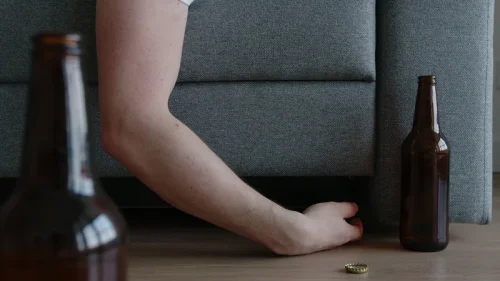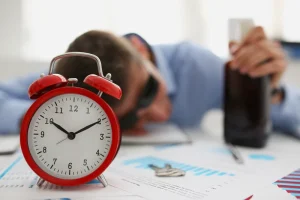Alcoholic Neuropathy Link Between Alcohol & Nerve Damage

Neuropathy has multifactorial causes, ranging from nutritional deficiencies to the toxic effects that alcohol has on neurons. Because of the many effects that alcohol has on the organism, it is important that patients with alcoholic neuropathy be managed by a team of inter-professionals in the health industry. The way alcohol neuropathy is being managed presently is not satisfactory. However, there is poor compliance on the part of patients, resulting in the progression of the condition and ultimately, poor quality of life. Residual neuropathy occurs even in patients who have practiced abstinence. While one may find relief from conventional treatment, the addictive nature or side effects of some medications makes it undesirable to use it for the long term.
Alcoholic polyneuropathy
Further studies are required to develop a greater understanding of the interaction these entities. A healthcare professional can offer support for people with alcohol use disorder. A doctor may also recommend treatments to manage neurological symptoms, such as pain relief medications, physical therapy, and mobility aids. Excessive, long-term consumption of alcohol can lead to malnutrition as well as nerve damage, and both contribute to the development of alcoholic neuropathy. A doctor may diagnose a person with alcoholic neuropathy, if alcohol use has damaged the peripheral nerves. People who drink heavily on a regular basis are at risk of developing this condition.

Alcoholic Neuropathy Symptoms
- Cardiac arrhythmias in patients with AAN might increase the probability of sudden cardiac death, which is probably due to toxic effects of alcohol on a cardiac muscle that is also observed in alcoholic cardiomyopathy [168, 169].
- Later, the results have been supported by Victor and Adams (1961)—among 12 patients with ALN, neuropathic symptoms were alleviated just after thiamine supplementation, even though the alcohol consumption was previously completely reduced [149].
- A systematic, computer-based search was conducted using the PubMed database.
Later, the results have been supported by Victor and Adams (1961)—among 12 patients with ALN, neuropathic symptoms were alleviated just after thiamine supplementation, even though the alcohol consumption was previously completely reduced [149]. Koike et al. (2003) compared clinical and histological differences between ALN with and without thiamine deficiency [65]. Also, the results of the group of 32 patients with non-alcoholic thiamine deficiency neuropathy were considered. Thiamine deficiency resulted in the progression of sensory dysfunctions; further, histological examination of the sural nerves revealed the loss of small nerve fibers and segmental demyelination.
- Implementing lifestyle changes, embracing early intervention, and moderating alcohol consumption are key components in preventing alcohol neuropathy.
- The most important risk factor for alcohol-related peripheral neuropathy is the total lifetime dose of ethanol, although other risk factors have been identified including genetic, male gender, and type of alcohol consumed.
- Persons with alcoholism may consume smaller amounts of essential nutrients and vitamins and/or exhibit impaired gastrointestinal absorption of these nutrients secondary to the direct effects of alcohol.
- Joseph & Levine [71] suggested that activity in signaling pathways that ultimately lead to apoptosis plays a critical role in the generation of neuropathic pain, before death of sensory neurones becomes apparent.
- In rare cases, vagus or recurrent laryngeal nerve involvement has been described.
Alcohol-Related Neurologic Disease
The reduction of internodal length contributes to the decreased speed of nerve conduction which may be implemented in impairments in perspiration, baroreceptor reflexes, and functions of internal organs. To determine the functions of the sympathetic division of the autonomic nervous system (ANS), sympathetic skin response (SSR) is used; the abnormal results of this test suggest subclinical transmission impairments [162]. Navarro et al. (1993) showed that nearly half of the alcohol-dependent patients without AAN symptoms and any aberrations in electrophysiologic studies presented abnormal SSR results [163]. In a similar study, SSR was used to assess the number of reactive sweat glands (SGN), which turned out to be decreased in alcohol-dependent patients [164].
A connection between MEK/ERK signaling and alcoholic neuropathy
Motor function of the tibial nerve was the next common [3, 11, 51, 54, 59, 63]. Finally, one study examined the strength-duration time constant (SDTC) and rheobase in median nerves of those with alcoholic peripheral neuropathy [69]. The SDTC was normal compared to controls, but the rheobase was significantly different suggesting that APN may affect internodal channels other than nodal channels or the Na+ –K+ ATP pump. Primarily, it was assumed that alcohol neuropathy stages the progression of ALN symptoms is due to malnutrition and micronutrient deficiency (mainly B1 hypovitaminosis) [82, 83]. Indeed, these factors contribute to the progression of ALN symptoms; however, they do not constitute direct factors that manifest in ALN development [84]. Current postulation holds that dysfunctions within the central and peripheral nervous system are due to both direct and indirect toxic effects of alcohol [31, 85,86,87].
Recently findings from our laboratory also suggest the benefecial effects of both α-tocopherol and tocotrienol, isoforms of vitamin E, in the prevention of hyperalgesia and allodynia in rats administered ethanol for 10 weeks [55]. We found more potent effects with tocotrienol as compared with α-tocopherol [55]. One of the other important issues in alcoholic individuals is the source of their calorie intake. These individuals draw the majority of calories from calorie rich alcoholic beverages with low nutritive value. Chronic abuse of alcohol depletes the pool of liver proteins which are consumed for energy production and insufficient intake of proteins only worsens this imbalance.

Fortunately, after receiving a diagnosis, people with alcoholic neuropathy can make healthy changes to minimize symptoms and receive help for chronic alcohol use. This could lead to disability, chronic pain, and damage to your arms and legs. However, if caught early enough, you can minimize the damage from alcoholic neuropathy. Avoiding alcohol and improving your diet can sometimes lead to a moderate to full recovery.

Methylcobalamin for the treatment of peripheral neuropathy
We strive to create content that is clear, concise, and easy to understand. Physical therapy and orthopedic appliances (such as splints) may be needed to maintain muscle function and limb position. Motor nerves are the nerves responsible for all voluntary skeletal and somatic movement such as moving the leg or arm. She has over a decade of direct patient care experience working as a registered nurse specializing in neurotrauma, stroke, and the emergency room. The diagnostic process may involve neurological examination, blood tests, and electromyography. People who drink heavily on a regular basis and have one or more of the following symptoms should contact a doctor.

Role of caspases in alcoholic neuropathy
Diagnosis usually involves a healthcare provider collecting a medical history, performing a medical and neurological exam, and performing blood and urine tests. Treatment https://ecosoberhouse.com/ options include steps to quit alcohol use and managing symptoms of the disease. The first step in treating alcoholic neuropathy includes stopping alcohol use altogether.
